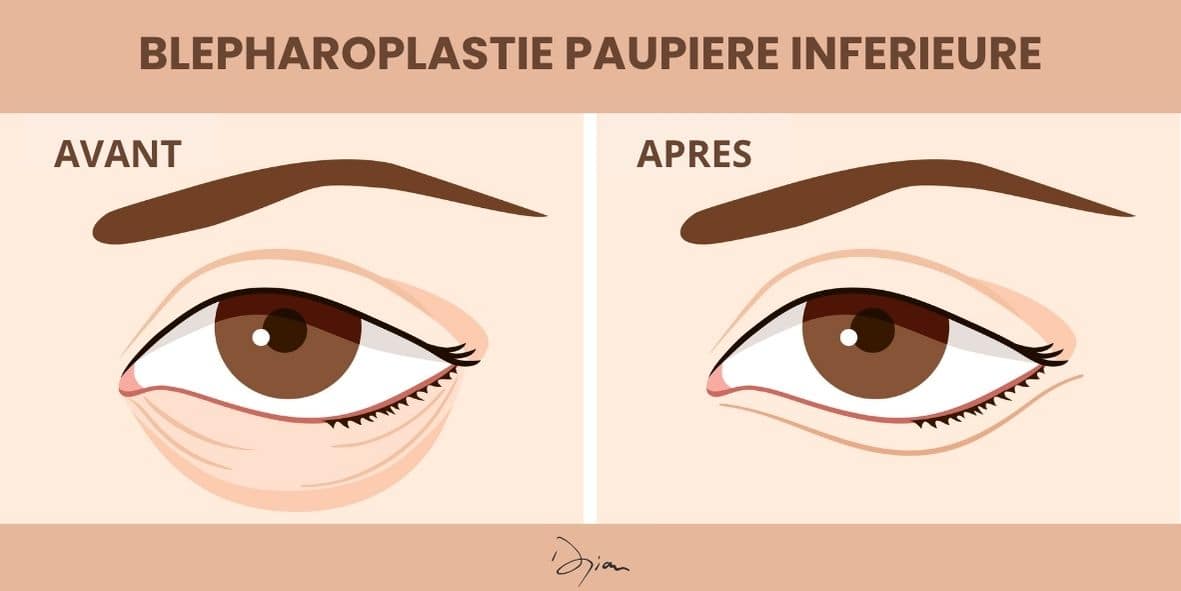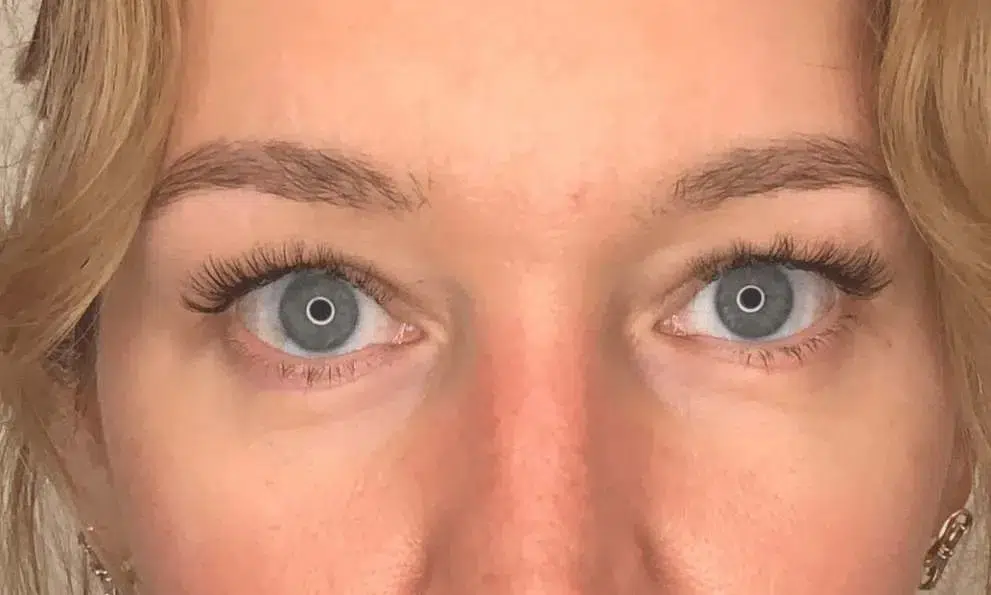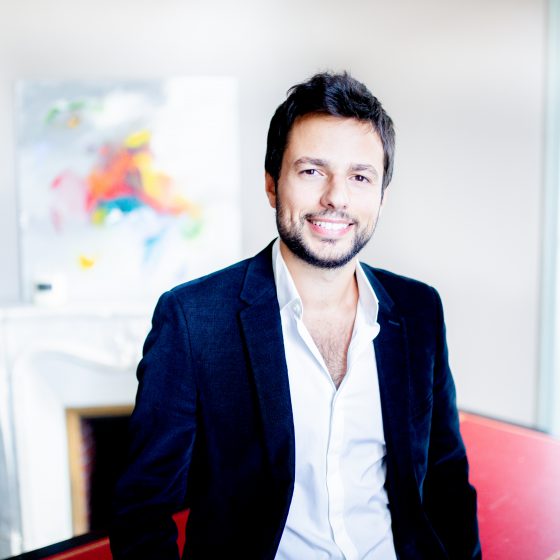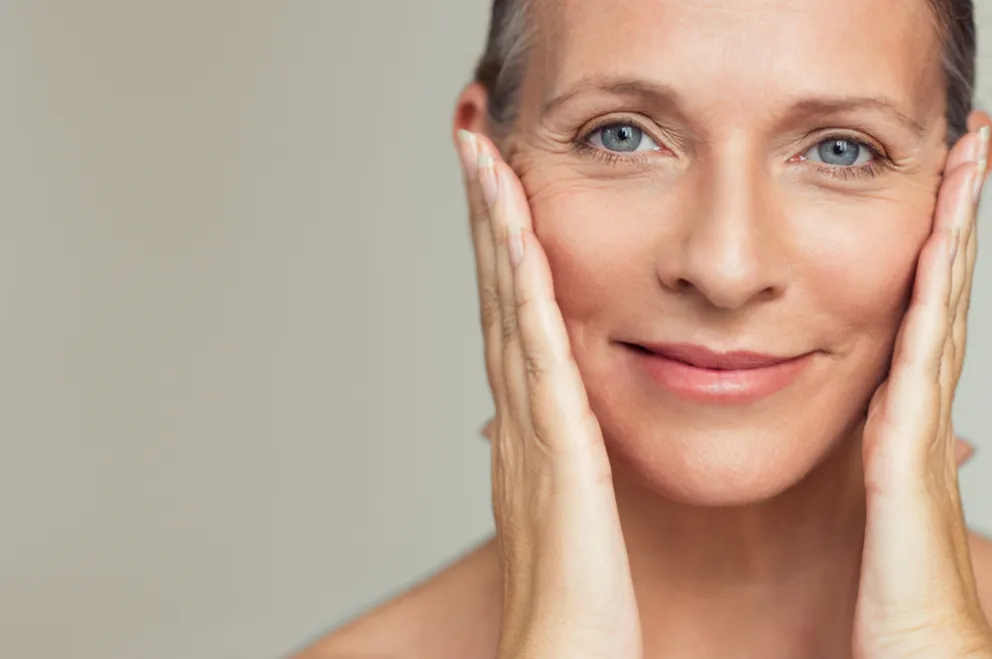BLEPHAROPLASTY IN PARIS: COSMETIC EYELID SURGERY
Cosmetic surgery specialist in Paris, I regularly perform blepharoplasty to correct drooping or wrinkled eyelids and bags under the eyes, which are responsible for a tired face. The result is a more open, rested look. Adapted to the effects of aging or certain morphologies, eyelid surgery offers natural, long-lasting results.
Your Questions
FREQUENTLY ASKED QUESTIONS ABOUT BLEPHAROPLASTY
IS BLEPHAROPLASTY DEFINITIVE?
The blepharoplasty offers lasting resultsoften considered definitive, especially for lower eyelidswhere the effects are generally permanent. However, the natural skin aging continues over time. It may happen that a sagging skin or a pocket recurrence appears again, particularly on the upper eyelids. In this case, a second operation (said secondary blepharoplasty) can be considered after 10 to 15 years. This recovery requires a more refined approach, as the tissues have been modified by the initial surgery. Even in the case of evolution, the eyes never regain their original tired appearance.
IS IT POSSIBLE TO CORRECT JUST ONE EYELID?
Yes, it is quite possible to correct a single eyelidor lower, particularly in the case of asymmetry orunilateral collapse (ptosis). The surgeon then adjusts the correction to preserving eye harmony. However, this situation is rarer, as the eyes are often treated symmetrically for a more natural result.
DOES BLEPHAROPLASTY HURT?
The pain is generally very slightoften described as discomfort or tension. The operation is performed under local anaesthetic (or general anaesthetic, depending on the case), and the after-effects are marked by bruising and swellingbut little real pain. The paracetamol is usually enough to relieve it. According to a study published in Aesthetic Surgery Journal85 % of patients rate pain after surgery less than 3 out of 10.
HOW LONG DOES THE OEDEMA LAST AFTER BLEPHAROPLASTY?
Edema resorption follows a relatively predictable chronology: significant reduction from day five, virtually disappear between two and three weeks. Some people experience greater tissue reactivity in the skin, prolonging this period slightly.
WHAT IS THE ALTERNATIVE TO BLEPHAROPLASTY?
The main alternatives to surgery are :
- Botox injections in Paris These are used to slightly raise the tail of the eyebrow.
- Hyaluronic acid injections in Paris useful for filling hollows under the eyes (valley of tears), but ineffective against puffiness.
- Fractional CO2 laser improves the texture of drooping eyelids thin skin around the eyes.
- Tensor threads The new "lift" effect can be applied to the eyebrow or temple.
- These methods are non-surgical, temporary and adapted to moderate signs of aging.
WHAT IS PLEXR?
The Plexr® (Plasma Exérèse) is a non-invasive surgery which uses an electric arc to create a superficial micro-ablation of the skin, stimulating its retraction. It is used to treat mild to moderate skin excess upper eyelids, without incision or scar. The procedure is performed without general anaesthesia, and the after-effects are marked by a number of symptoms. light crusts for 5 to 7 days.
It is a good alternative for patients who do not wish to undergo surgery, but its effectiveness is limited. limited to less advanced cases (source : Journal of Cosmetic and Laser Therapy).
CAN BOTOX LIFT THE EYELIDS?
The botox does not act directly on drooping eyelids. However, it can be injected into the orbicularis or forehead muscle to slightly raise the eyebrowThis visually attenuates the effect of heaviness in the upper eye area. This effect is modest (a few millimetres) and temporary (4 to 6 months). It does not treat excess skin or fat pockets.
WHEN CAN I APPLY MAKE-UP AFTER BLEPHAROPLASTY?
Eyelid make-up is generally permitted from 7th day after surgeryonce the wires have been removed and the skin begins to heal properly. It's important to wait until the area is free of open wounds and scabs.
We recommend using hypoallergenic products and disinfect brushes to avoid infection. In case of doubt, the surgeon can adapt this period according to your individual healing speed.
DOES BLEPHAROPLASTY AFFECT MY CONTACT LENS WEAR?
Yes, temporarily. The eyes can be irritated, watery or swollenmaking it possible to wear contact lenses uncomfortable or not recommended for one to two weeks. It's best to wear glasses until the swelling and tightness have disappeared.
Returning to contact lenses is generally possible after 10 to 15 daysThis is subject to normal healing. This may vary, depending on whether the procedure concerns only the upper eyelid or both.
YOU MAY BE INTERESTED
IN THESE SECTIONS
TO DR. DJIAN








